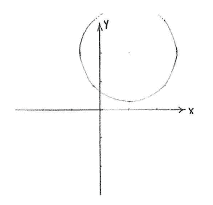Lösung 4.1:6b
Aus Online Mathematik Brückenkurs 1
(Unterschied zwischen Versionen)
K |
K (Robot: Automated text replacement (-{{Displayed math +{{Abgesetzte Formel)) |
||
| Zeile 1: | Zeile 1: | ||
A quick way to interpret the equation is to compare it with the standard formula for the equation of a circle with centre at (''a'',''b'') and radius ''r'', | A quick way to interpret the equation is to compare it with the standard formula for the equation of a circle with centre at (''a'',''b'') and radius ''r'', | ||
| - | {{ | + | {{Abgesetzte Formel||<math>(x-a)^2 + (y-b)^2 = r^2\,\textrm{.}</math>}} |
In our case, we can write the equation as | In our case, we can write the equation as | ||
| - | {{ | + | {{Abgesetzte Formel||<math>(x-1)^2 + (y-2)^2 = (\sqrt{3})^2</math>}} |
and then we see that it describes a circle with centre at (1,2) and radius <math>\sqrt{3}\,</math>. | and then we see that it describes a circle with centre at (1,2) and radius <math>\sqrt{3}\,</math>. | ||
Version vom 08:48, 22. Okt. 2008
A quick way to interpret the equation is to compare it with the standard formula for the equation of a circle with centre at (a,b) and radius r,
| \displaystyle (x-a)^2 + (y-b)^2 = r^2\,\textrm{.} |
In our case, we can write the equation as
| \displaystyle (x-1)^2 + (y-2)^2 = (\sqrt{3})^2 |
and then we see that it describes a circle with centre at (1,2) and radius \displaystyle \sqrt{3}\,.

